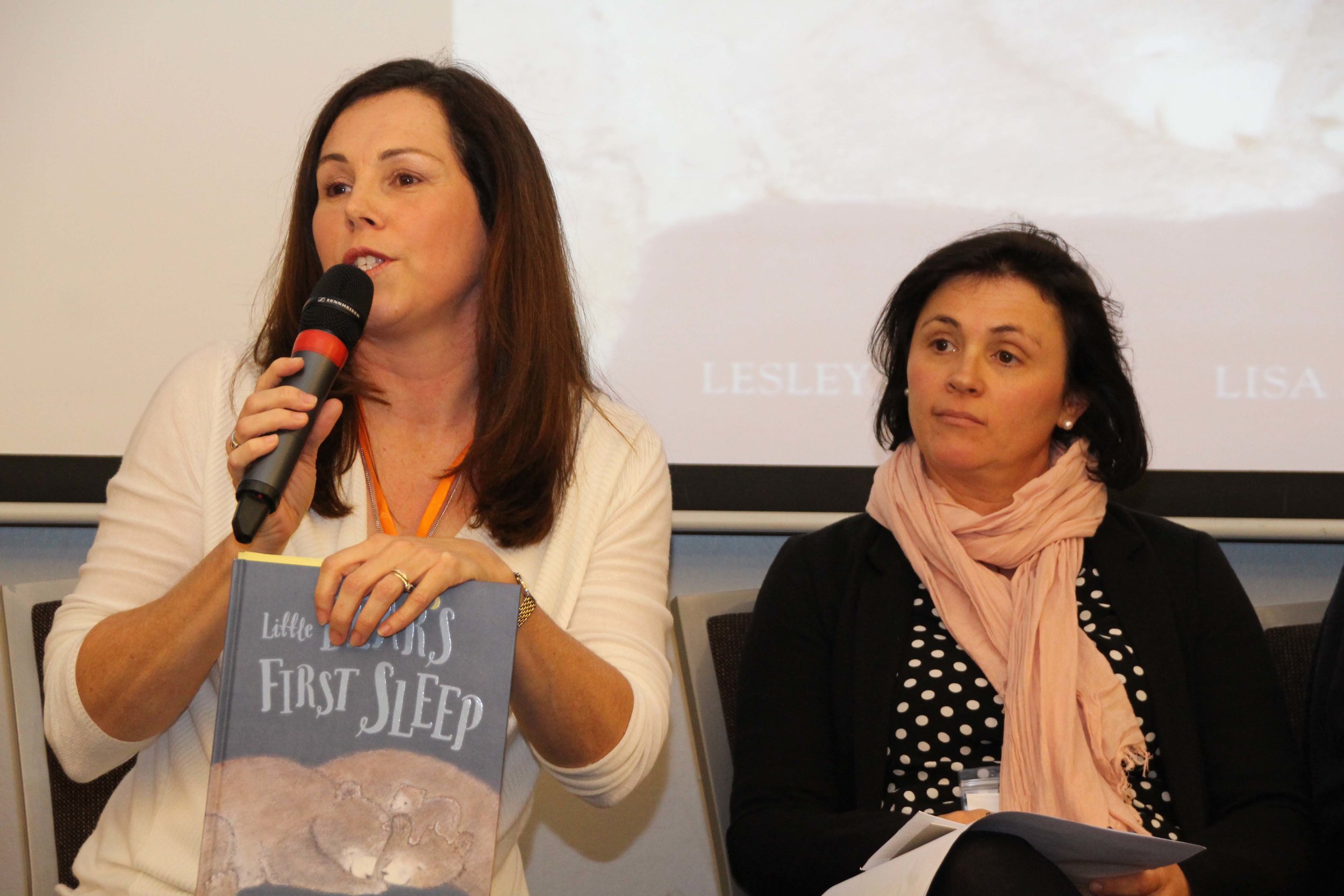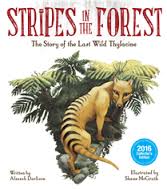The pitch to publishers session was an opportunity for 8 delegates to pitch their PB/MG/YA manuscript to a panel of industry experts in just 3 minutes.
An excited audience watched as Tracey Hawkins and Katrina Germein introduced a panel of publishers while 8 very brave delegates waited in the audience for their names to be called out.
The publishers:
Donna Rawlins – Book Designer, Walker Books
Lisa Berryman—Associate Publisher, HarperCollins
Clare Hallifax—Publishing Manager, Scholastic
Maryann Ballantyne—Publisher, Black Dog Books an imprint of Walker Books
Suzanne O'Sullivan—Commissioning Editor, Hachette
Sue Whiting - former editor for Walker and author
The pitchers should consider the following:
- What makes the publishers want to read on?
- What makes the publishers want to request a full manuscript?
Previous pitch winner:
Pamela Rushby explained how her successful pitch resulted in publication. Firstly, she was feeling terrified and had a lot of sympathy and empathy for the those pitching today.
When each publisher on the panel showed an interest in her manuscript she was delighted but it soon came back ‘like a homing pigeon.’ After a bit of reworking Clare Hallifax from Omnibus, Scholastic picked Pamela’s manuscript up.
Pamela said you must make it enticing and intriguing so members on the panel will want it. She recommends having a tag line like she did for her own book as follows:
‘Princess Diaries meets Monster High.’
The Pitchers:
Christina Booth with ‘One Careless Night.’ A picture book based on historical events.
- Sue Whiting said the story behind the story gave her chills.
- Maryann Ballantyne said it was the kind of book Black Dog does best.
- Lisa Berryman said it was a very good pitch spoken in a calm voice.
- Jenny Hale with ‘Immortal Me.’ Historical fiction for ages 12+
- Lisa Berryman said she loves historical fiction and that the story was compelling. She loved the sense of jeopardy.
- Suzanne O’Sullivan was holding her breath due to the action and suspense.
- Donna Rawlins said that she loved historical fiction and joked that she would love to do the cover.
Jodie Wells - Slowgrove with ‘Two Islands.’ A picture book for 8+
- Maryann Ballantyne wanted to know more about the characters.
- Clare Hallifax said the story was a universal theme that conveyed an enormous amount in so few words (300.)
- Lisa Berryman’s brain was fizzing with illustration ideas.
Benjamin Johnston with ‘Shoes From Somewhere Else.’ A middle grade novel.
- Suzanne O’Sullivan said it was an intriguing mystery.
- Sue Whiting thought it was suitable for 8-12 year olds, not 10 to 14 as Ben had suggested. She loved the deeper meaning with lots of twists and turns.
- Clare Hallifax thought the fairytale type of story was very evocative.
Karen Collum with ‘Hatch.’ Dystopian, 500 word picture book for 6-10 year olds.
- Suzanne O’Sullivan said it was beautiful and that she had illustrations running through her head.
- Clare said it was very emotive and the themes were love and conquering fear.
- Sue Whiting wanted to know more about the characters fears and the world after the inciting event.
Gina Newton with ‘Tides of Orca.’ YA series and epic maritime adventure.
- Lisa Berryman said strong female characters are popular.
- Suzanne O’Sullivan said it was a complex story with strong characters and that she would be unlikely to sign up 5 books in one go but maybe 2 or 3.
- Maryanne Ballantyne said Gina did well trying to pitch 90,000 words in 3 mintues.
Dee White with ‘Beyond Belief.’ Historical fiction based on a true events for 10-14 year olds.
- Clare Hallifax said it was a beautiful pitch. She thought the story was gripping and timely and that she wanted Dee’s manuscript!!!
- Suzanne O’Sullivan said she loves reading about WW2 as the stakes don’t get any higher than that.
Jenny Blackford with ‘Dead Girl In The Mirror.’ MG for 10 to 12 year olds.
- Clare Hallifax loves a good ghost story.
- Lisa Berryman thought it felt more suitable as YA (Young Adult).
- Maryanne Ballantyne liked the fact it was a historical and ghost story all in one.
Anna Popova with ‘Button City.’
- Suzanne O’Sullivan said there was so much potential for secret hidden worlds and that it was lots of fun.
- Maryanne Ballantyne said she had extensive button tins and that it was an intriguing story.
- Donna Rawlins loves tiny people worlds.
This session was so fascinating. I could not write my notes fast enough to keep up with all the nuggets of great information being shared by the publishing panel. They were generous in their encouragement and constructive feedback. So to wrap this up, if you are considering entering a pitch, think about the following:
- Give the genre (picture book, middle grade, young adult)
- Word count
- Age range
- Theme (environmental, dystopian, adventure)
- Tagline/pitch (your story in one sentence)
- Consider the illustration potential
- Research two comparables
- Who is your main character and why should we as the reader be rooting for them.
Donna Rawlins, Maryann Ballantyne, Sue Whiting, Clare Hallifax, Suzanne O'Sullivan & Lisa Berryman - The Publishers Photo attributed to Oliver Phommavanh
The other exciting snippet of information is that the publishers when attending a conference like SCBWI Sydney, do pick up new talent.
Suzanne O’Sullivan signed up an illustrator for KIDLITVIC2016.Clare Hallifax signed up an illustrator from KIDLITVIC2016.
Maryanne Ballantyne discovered 2 authors from CYA and 2 illustrators from SCBWISydney 2016.
They are on the look out for new talent so give them your best effort and goodluck!
Ramona Davy Roving Reporter
#SCBWISyd

























